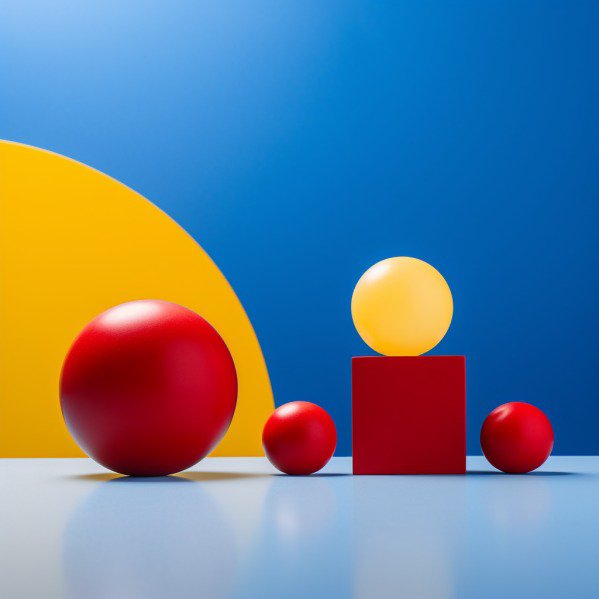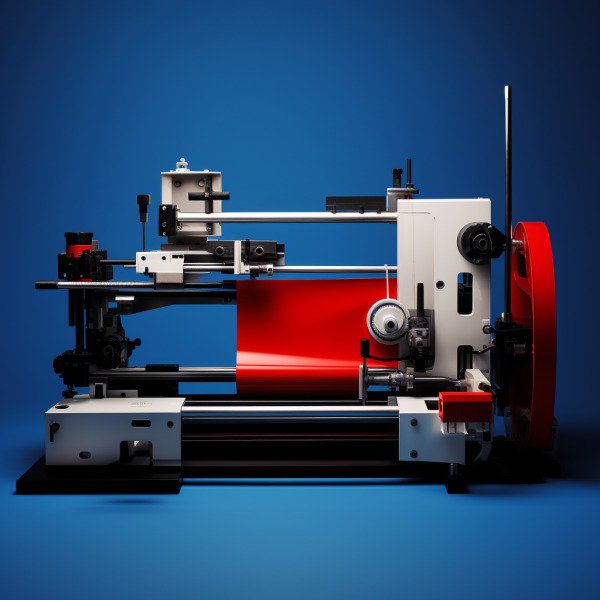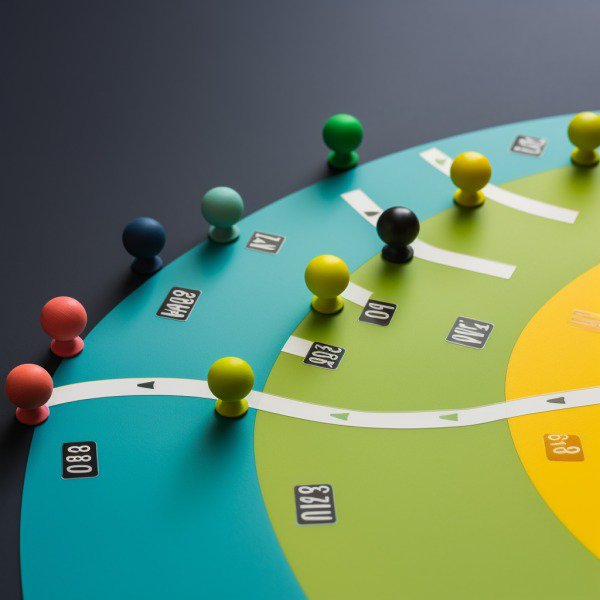Ideation and Validation: The Foundation of Your Product Development
So, you have a brilliant idea for a new product?
Great. But before diving headfirst into development, it’s crucial to validate your concept.
Here’s how:
Brainstorming Product Ideas
Gather your team and start brainstorming. Mind mapping techniques, sticky notes, or even just chatting over coffee can help generate fresh perspectives on potential products.
Crowdfunding Campaigns for Validation
Crowdfunding sites such as Kickstarter and Indiegogo are great options to assess potential customer interest while raising capital at the same time. If people back your campaign, it’s likely they’ll buy the final product too.
Utilizing Google Trends for Market Research
“Is my idea unique?” “Will people search for this?” –We hear you asking these questions. Enter: Google Trends.” This tool allows you to analyze historical search data related to your concept so that you can make informed decisions about its viability.
Now that you’ve validated your idea, it’s time to start building. But remember, this is just the beginning of a thrilling product development journey. The Product Development Process begins with concept development, followed by market research, business analysis, and prototyping phase. The final product is then tested, and improvements are made before launching it to the market.
It’s important to understand the product life cycle and the manufacturing process to ensure that your product is successful. You should also have a marketing strategy in place to target your audience and make them aware of your product. It’s essential to know your target market and their needs to make sure that your product meets their requirements.
Many products fail because they don’t have a clear business case or market potential. Conducting a case study can help you understand the market and make informed decisions. It’s also important to get customer feedback and make improvements accordingly.
Launching a minimum viable product (MVP) can help you test the market and make improvements before launching the final product. Having multiple product lines can also help you cater to different audiences and increase your revenue.
Remember, the product development process is a journey, and it takes time. But with the right approach and strategy, you can successfully launch your product and make it a success.
Buckle up and enjoy the ride.
Research and Competitive Analysis: The Key to a Winning Product
Alright, let’s dive in.
To truly stand out from the crowd, you need to conduct thorough research during the validation stage. This includes competitive analysis of existing players in your space.
A great way to do this is by signing up for competitor emails. See how they’re marketing their products and making sales – it’s like getting a free lesson. Tools like MailCharts, for example, can help you analyze competitors’ strategies.
Beyond that, keep an eye on industry trends. Understand customer needs and potential challenges that may arise when bringing your product to market.
Analyzing Competitors’ Strategies
You can learn so much from observing others. Use tools like Ahrefs or Moz to study their SEO tactics and backlink profiles.
Note: Don’t copy them blindly – use these insights as inspiration while staying true to your brand identity.
Identifying Industry Trends
Trends come and go but being aware of them helps you stay relevant. Follow industry influencers on social media or subscribe to newsletters such as Trends by The Hustle.
Understanding Customer Needs
Put the customer first by understanding their needs and wants through surveys, reviews, and focus groups. Make sure you’re addressing their pain points and desires by conducting surveys, analyzing reviews, or even hosting focus groups.
Platforms like SurveyMonkey can help you gather valuable insights from your target audience.
Remember: Knowledge is power. Gaining insight into your rivals, market developments, and client requirements is a must for crafting an effective product.
Planning Your Product Design
Let’s get into the specifics of product design preparation.
You’ve identified a great concept and validated it; now is the moment to make that vision tangible with an achievable design blueprint.
Whether you’re sketching on paper or using Adobe Illustrator, your goal is to create clear visuals detailing every aspect of your product.
Creating Detailed Sketches or Diagrams
Start by hand-drawing rough sketches outlining the shape, size, and features of your product.
Remember: these initial drafts don’t have to be perfect – they’re meant as a starting point for refining later on.
Listing Required Components/Materials
List all materials and components needed for manufacturing in detail – this will save you headaches when discussing specifics with suppliers down the line.
Bonus tip: Research sustainable alternatives like recycled plastics or biodegradable packaging options. It’s not only eco-friendly but also great for branding.
Determining Suitable Categories
Determine which industry category best fits your product before diving into sourcing and costing phases (e.g., electronics, fashion accessories).
Now that we’ve covered planning, it’s time for prototyping – but that’s a story for another day.
Stay tuned.
Prototyping Process: Bringing Your Product Idea to Life
Let’s take the plunge into the stimulating realm of prototyping.
Transforming your idea from a sketch or digital design into a tangible product is crucial for its success. But how do you get started?
DIY Prototyping Methods
You can start by exploring DIY prototyping methods, such as using clay, foam, or even 3D printing to create an initial prototype. This approach of working with your hands can give you insight into the complexities and difficulties related to your product prior to advancing.
Collaborating with Student Talent
If DIY isn’t your thing, consider tapping into student talent at universities and colleges offering design programs. Collaborating with students not only provides fresh perspectives but also offers lower costs and quicker turnaround times compared to professional designers.
Turning 3D Designs into Physical Samples
To prepare for mass production, it’s essential to turn your 3D designs into physical samples that manufacturers can work with easily. This presents an opportunity for them to contribute their expertise in materializing your vision.
Keep an open mind and be willing to adjust your design until it meets the expectations of your intended audience. Stay open to feedback and be prepared to iterate until you achieve a product that truly resonates with your target market.
Finding the Perfect Supplier Match for Your Startup: Online and In-Person Resources
Are you ready to source materials for your product development process? Let’s explore some valuable resources and strategies that can help you find the best suppliers.
Online Supplier Resources
If you’re looking for suppliers online, Alibaba.com is a fantastic starting point. This platform connects you with thousands of manufacturers from around the world, offering competitive prices and a wide range of products. Don’t forget to check out their new products section for fresh ideas.
Attending Trade Shows for Networking
If in-person connections are more your style, consider attending trade shows related to your industry. At a trade show, you’ll be able to interact with numerous vendors at once, converse about materials and supplies needed, and create enduring connections with potential collaborators. To get started, search online directories like 10Times Top 100 Trade Shows List.
Building Personal Relationships with Suppliers
The key ingredient in successful supplier partnerships is building personal relationships. Here are some tips:
- Schedule regular calls or meetings to create an open line of communication.
- Show genuine interest in their business growth as well as yours – remember it’s a two-way street.
- Express gratitude for their hard work and commitment to your project.
With these strategies in mind, you’ll be well on your way to finding the perfect supplier match for your product development process.
Costing and Pricing Your Product: A Step-by-Step Guide
Alright, let’s talk numbers.
Determining a viable cost and retail price that works for both you and your customers is essential to achieving profitability with your product.
Here’s a step-by-step guide on how to do just that:
Step #1: Calculate your Total Cost of Goods Sold (COGS). This includes everything from manufacturing expenses to shipping fees, import duties, and more.
Investopedia has an excellent breakdown of COGS if you’re new to this concept.
Step #2: Determine your Retail Price, based on the total COGS. Make sure it covers all costs while still providing room for profit margins.
A great resource is this Shopify article, which offers tips on pricing strategies for different types of products.
Step #3: Estimate potential Gross Margin or Profit per Unit Sold.
You can use tools like Excel or Google Sheets to break down each cost as separate line items in order to get a clear picture of where money is being spent – and earned.
Fashion & Apparel Development Tips
- Create detailed sketches or diagrams before approaching manufacturers with prototype ideas. This will help ensure everyone is on the same page when discussing materials and requirements.
- Consider working with pattern makers or seamstresses to help bring your design ideas to life.
Beauty Product Development Strategies
- Look into white labeling options, which involve partnering with labs/chemists that can produce your product under your brand name.
- Ensure you’re following industry regulations and guidelines for safety, packaging, and labeling.
Food Product Creation Guidelines
- Rent a commercial kitchen space that meets health and safety standards for food production. This is essential when developing new food products.
- Prioritize proper labeling practices so customers know exactly what they’re consuming. Check out the FDA’s guide on Food Labeling & Nutrition.
Tips for Developing Products in Specific Industries
Navigating the unique challenges of product development in various industries can be daunting, yet our tailored tips provide a way to make it more manageable.
But fear not.
We’ve got some actionable tips tailored to specific industries that will help you navigate the tricky waters of product development.
Fashion & Apparel Development Tips
For fashion and apparel, working with skilled pattern makers or seamstresses is crucial.
Learn how to collaborate effectively with these professionals, as they’ll bring your designs to life while ensuring proper fit and functionality.
Beauty Product Development Strategies
In the beauty industry, consider white labeling or partnering with labs and chemists who specialize in cosmetics formulation.
Explore different options available for private label manufacturing, which allows you to focus on branding while experts handle production aspects like ingredient sourcing and quality control.
Food Product Creation Guidelines
Moving onto food products, it’s essential to work within commercial kitchens that meet health and safety standards required by local regulations.
.
FAQs in Relation to Product Development Process
What are the 4 types of product development process?
The four main types of product development processes include: (1) New Product Development, which involves creating a completely new offering; (2) Product Extension, where existing products are modified or improved; (3) Product Line Expansion, adding new variations to an existing line; and (4) Repackaging or Rebranding, changing the presentation or marketing strategy of a current product.
What is the product development process?
The product development process is a series of steps that businesses follow to conceptualize, design, create, test, and launch new products. It typically includes ideation, validation, research and analysis, planning and design, prototyping, supplier sourcing, costing/pricing considerations as well as finalizing production before launching in the market.
What are the 7 stages in the new product development process?
The seven stages in the new product development process consist of:
- Idea Generation – brainstorming potential concepts;
- Idea Screening – evaluating ideas for feasibility;
- Concept Development & Testing – refining ideas based on customer feedback;
- Business Analysis – assessing the financial viability of the product;
- Product Development & Prototyping – creating a working model or sample;
- Market Testing – gauging consumer interest and response; and
- Commercialization – launching the product in the market.
What are the 5 stages of product development?
The five stages of product development, also known as product life cycle, include:
- Introduction: Launching a new product into the market;
- Growth: Increasing sales and customer adoption rates;
- Maturity: Achieving peak sales with stable growth rates;
- Saturation: Sales plateau due to increased competition or market saturation; and
- Decline: Decreasing demand leading to eventual discontinuation.
Conclusion
Formulating a product is an intricate process requiring meticulous organizing, inquiry, and implementation. In this blog post, we covered the various stages of the product development process, including ideation and validation, research and competitive analysis, planning your product design, prototyping process, suppliers online & in-person options for sourcing materials or components needed to build out prototypes or final products.
We also discussed costing and pricing strategies for determining total COGS (cost of goods sold), retail pricing models based on market demand trends or competitor prices as well as tips for developing products in specific industries such as fashion & apparel development tips.
If you’re looking to develop a new product but don’t know where to start? Check out DesignMatch.io! Our platform connects entrepreneurs with vetted designers who can help bring their ideas to life through our streamlined project management system.



